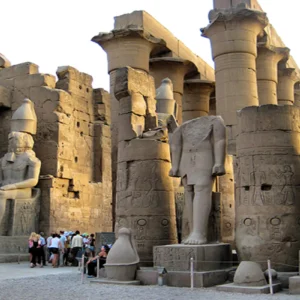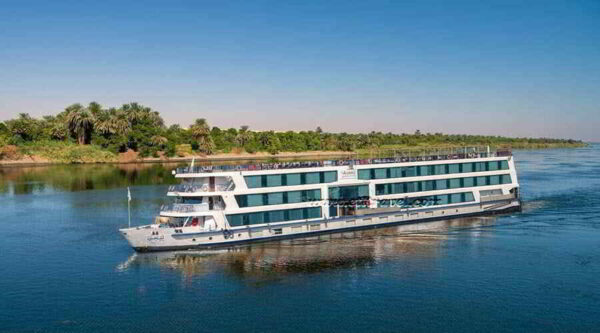Cairo, Egypt
An overview of the Egyptian city of Cairo:
Cairo City Or Cairo Al-Muizz or the City of a Thousand Minarets. Cairo has been the capital of the Arab Republic of Egypt since the year 1169 AD and the largest city in Egypt. It is also considered the largest city in the Middle East and Africa in terms of population, as Greater Cairo embraces more than 20% of the population in the Arab Republic of Egypt and is considered One of the largest cities in Africa in terms of area, The city of Cairo is located on the banks of the Nile River, as it is considered the gateway to the Nile Delta, through which the Nile is divided into the Rosetta and Damietta branches. Greater Cairo consists of three governorates: Cairo, Giza, and Qalyubia. (Shubra El Kheima city).
Where history records the Fatimid commander Jawhar al-Siqilli, the commander of the Fatimid armies coming from the Maghreb, as the one who built the city of Cairo over the city of Fustat, which was built by the Islamic leader Amr ibn al-Aas and came to Egypt.
Origin of the name Cairo:
At first, Jawhar al-Siqilli named it al-Mansuriyah, after al-Mansur Abu al-Mu’izz li-Din Allah, but al-Mu’izz chose the name Cairo for it, as a good omen that it would conquer the enemies.
The economic importance of Cairo:
Cairo is considered the beating heart of Egypt and its economic and administrative center, as it contains the large economic entities and institutions, the main markets and the majority of major merchants and wholesalers.
It also contains about half of the hospitals and universities of the Arab Republic of Egypt, and the headquarters of major commercial, import and export companies are also concentrated there, unlike the major industrial areas in The country is similar to the 6th of October Industrial Zone, Obour, Helwan, and 10th of Ramadan City.
It is also considered a regional center for large international economic entities and organizations such as the United Nations Industrial Development Organization (UNIDO). It also hosts the Egyptian Stock Exchange, the Central Bank of Egypt, the Cairo Stock Exchange, and the headquarters of many Egyptian and foreign banks.
In addition to its historical monuments and the cultural heritage it contains, tourism is one of the main economic resources that Cairo depends on, in addition to its other economic resources.
Cairo historically:
Many scholars confirm that Cairo was previously the capital of Egypt during most periods of history. It was also known in the Pharaonic era as “Mennefer,” meaning the beautiful port. Cairo inspired many, many writers and historians to direct their pens and inks and write exclusively about it, as many called it Among the beautiful names such as Al Mahrousa, Cairo Al Moez, the City of a Thousand Minarets, and the Jewel of the East.
The construction of Cairo goes back to Commander Jawhar al-Saqilli on the ruins of the Babylon Fort, the ruins of which still remain until now, as well as the city of peace, which was built by Amr ibn al-Aas and which he took as his capital, then the military city and the city of al-Qata`i, which was established by Ahmed ibn Tulun until the era of the Fatimid Caliph al-Mu’izz li-Din Allah.
Through the leader Jawhar al-Siqilli in 969, he erected a wall around the three cities and called it Cairo. Cairo is also distinguished by its historical neighborhoods such as Al-Hussein, Sayyida Zainab, Sayyida Nafisa, Al-Darb Al-Ahmar, and Bab Al-Sharia. These neighborhoods are distinguished by the Fatimid and Mamluk heritage, in terms of huge wooden doors and mashrabiyas that express that era.
Historical landmarks of Cairo:
Cairo is distinguished by its great and at the same time exciting diversity in its historical monuments, including Pharaonic, Islamic and Christian, which represent most of human civilizations, and bear witness to the antiquity of that open museum (the historic city of Cairo).
It also has landmarks that distinguish it from the world, such as the Pyramids of Giza and the Sphinx, one of the Seven Wonders of the World, as well as the Al-Azhar Mosque, which is considered the largest Islamic university in the world.
And also the Citadel of Salah al-Din al-Ayyubi, as well as the Amr ibn al-Aas Mosque in the city of Fustat, which is considered the first mosque in Egypt.
It is also distinguished by its diversity in religious heritage between Islamic and Christian, from the Ahmed Ibn Tulun Mosque, the Qaytbay Mosque, the Mosque of Muhammad Ali, the Mosque of Sultan Hassan, the Mosque of al-Hussein and Sayyida Zeinab, as well as the hanging Church .
It is also characterized by scientific and cultural landmarks such as the National Library and Archives, the Egyptian Museum, the Egyptian Opera House, the Cairo Tower, and Cairo University, which is the second oldest university in Egypt after Al-Azhar University, and many other landmarks that lived through different eras of Pharaohs, Romans, Copts, Muslims, and others.
Other features in Cairo:
Cairo includes the most important and largest train stations in Egypt (Misr or Ramses Station), and it has the largest subway system in the Middle East and Africa. Cairo also has an equipped road network linking it to other Egyptian cities. Cairo is also famous for its many bridges and viaducts, such as the Qasr al-Nil Bridge and Bridge 6. October is considered the longest bridge in Egypt, linking the east and west of the city. It is also home to Cairo International Airport, which is considered one of the most important and largest airports in the Middle East and Africa
Weather conditions in Cairo:
Cairo is characterized by warm weather during the day and cold at night. It is hot in the summer and somewhat mild in the winter. Cairo is also a very dry city due to the weak average annual rainfall, which averages approximately 1 cm. Cairo is also characterized by high humidity rates in the summer due to Its proximity to the Nile River.
In the end, my dear visitor, you should know that Cairo is one of the most important cities and main pillars in the Mediterranean region and the Middle East, as millions of tourists visit it annually, and it is considered the capital of cultural tourism due to its possession of famous landmarks such as the Egyptian Opera House, the Baron Empain Palace, the Al-Azhar Mosque, the Cairo Tower, and many mosques. historical Cairo is also famous for its many shopping centers and city attractions, such as Al-Moez Street, Al-Azhar Park, Cairo International Stadium, Talaat Harb Square, Ramses Station, the Egyptian Museum, Old Cairo, Sultan Hassan Mosque, and Al-Rifai Mosque.
Cairo is also considered a prestigious educational center because it Home to many local and foreign universities and higher education institutes such as:
Cairo University, Al-Azhar University, Ain Shams University, and Helwan University. Among the international universities are the American University in Cairo and the Canadian International College.
Egypt Tour Packages from Cairo
-
From $1440 🎗 10% OFFAswan, Cairo, Egypt, Luxor

 Sale! Add to cart
7 Days Deluxe Nile cruise + Domestic Flights
Sale! Add to cart
7 Days Deluxe Nile cruise + Domestic Flights7 Days Tour To Egypt with Cairo, Aswan, Luxor, and Nile Cruise
Rated 5.00 out of 5Cairo and Luxor Tour Packages7-Days Tour To Egypt with Cairo, Aswan, Luxor, and Nile Cruise Egypt Cruis Era provides you with a 7 days tour to Egypt that covers the essentials of Cairo, Aswan, Luxo -
From $690 🎗 0% OFFAlexandria, Cairo, Luxor
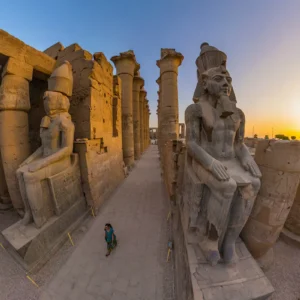
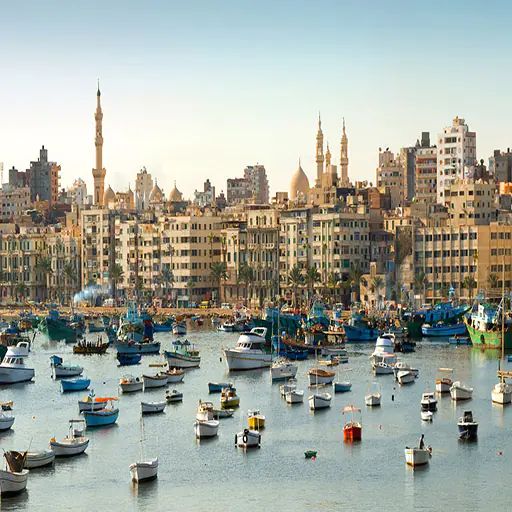 Sale! Add to cart
6 Days Deluxe Nile cruise + Domestic FlightsWhat to bring with you? A trip to Egypt takes you to a mystical destination where you can di
Sale! Add to cart
6 Days Deluxe Nile cruise + Domestic FlightsWhat to bring with you? A trip to Egypt takes you to a mystical destination where you can di -
From $1134 🎗 10% OFFCairo, Egypt, Luxor

 Sale! Add to cart
6 Days Air-conditioned van + Sleeping Train
Sale! Add to cart
6 Days Air-conditioned van + Sleeping Train6 Days Egypt Tour Package To Cairo and Luxor with Train
Rated 5.00 out of 5Cairo and Luxor Tour Packages6 Days Egypt Tour Package To Cairo and Luxor with Train Our 6 Days Egypt Tour Package To Cairo and Luxor with Train is your opportunity to Enjoy the best Egypt tours whil -
Why you’ll love this trip: Experience the mysteries and treasures of Egypt Embark on a leisurely paced 3-night cruise on the Nile,
-
From $3200 🎗 0% OFFAbu Simbel, Alexandria, Cairo, Hurghada

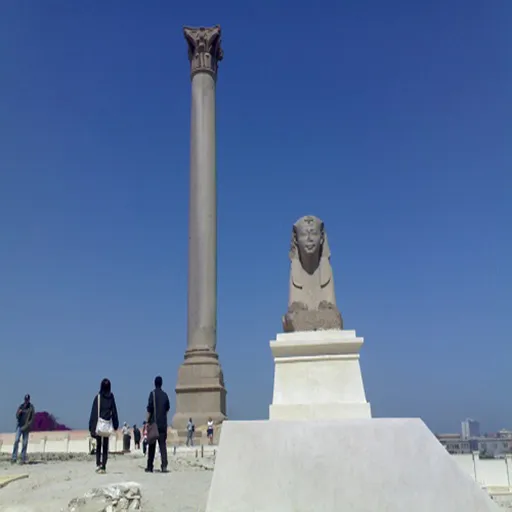 Sale! Add to cart
15 Days Deluxe Nile cruise + Domestic Flights
Sale! Add to cart
15 Days Deluxe Nile cruise + Domestic Flights15 Day Cairo, Alexandria, Hurghada, Nile Cruise and Abu Simbel
Rated 5.00 out of 5Egypt Tour PackagesWhy you’ll love this trip: Experience the mysteries and treasures of Egypt in 14 nights trip. Embark on a leisurely paced 3-nigh



